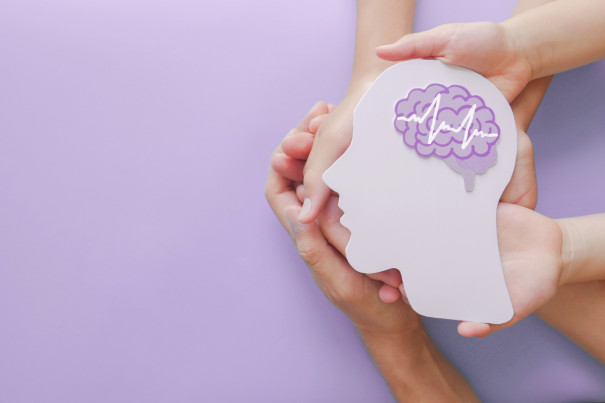|
Audio Version Available
|
Back when they were still in primary school, my now 19-year-old son was hesitant to be associated with his younger brother, who was diagnosed with Attention Deficit Hyperactivity Disorder (ADHD) and dyslexia.
He had heard his schoolmates remark that his brother, who is a year younger than him, has a “mental disorder” and was afraid that they would also assume that he too had some mental condition.
You can imagine that this led to a good conversation between my older son and me on what ADHD is and isn’t, and why it isn’t a “mental problem”, as the colloquial meaning would entail.
He was just about 8 or 9 years old then.
Without clear explanations, and even with good intentions, communicating to children about their peers with special needs is a tricky thing.
One never knows how it is truly received, and it can sometimes result in these wrongly quoted definitions like “mental disorder” or “something wrong” — words that you could imagine coming from innocent children’s lips.
The power of labels

As humans, we categorise our environment to simplify the complex world that we live in. Try asking someone for directions to a location without knowing its address and you’ll see what I mean!
But it’s okay to tell someone that his destination is “two blocks after the tall white building and next to the rundown old school”. It’s less okay when we use labels that have cultural, racial, socio-economic or even mental capacity overtones.
In fact, the National Council for Social Services (NCSS) has an ongoing Beyond The Label campaign that aims to combat the stigma that comes with society stereotyping those with special needs.
Yet communicating with proper vocabulary and even using specific labels in an appropriate way can be a way to avoid misperceptions and misrepresentations.
In our digital information age, you can be sure that children will google unfamiliar terms just so they aren’t caught out the next time the topic is brought up.
That’s why hiding behind more descriptive ways of addressing special needs can unwittingly lead to more misconceptions. Tip-toeing around the issue can result in the student finding out on their own — and it doesn’t always lead to good outcomes.
Other stories you might like





For example, let’s say a teacher wants to call for students to be kind to one another and to look out for others who may need extra support in class.
She has two choices. She can list and explain the labels of the types of needs that students may have (ADHD, autism spectrum disorder, dyslexia, anxiety and so on…) in a technical and empathetic way, without pointing out the students directly.
Think of it as describing physical ailments, — much like explaining allergies and medical conditions — and therefore in the same vein, neurodevelopmental learning and behaviour conditions.
The focus is on the fact that students who have these conditions often experience difficulties and would do well with more kindness from their peers.
Being “scientific” about explaining these conditions also removes the room for students to feel as if the teachers are giving preferential treatment to some of their peers.
The second choice is to be more general and vague about talking about such labels.
This often arises from both teachers’ and parents’ uncertainties over managing the topic, which results in them using a descriptive format to talk about how some students have needs that require support from their peers.
Specific mention of labels are avoided and words like “different” and “difficulties” are chosen instead.

The first option is educational. Through this approach, students learn about neurodevelopment disorders like ADHD, dyslexia, ASD, dyspraxia, dyscalculia and others.
There are potential benefits on many levels: Those with the conditions feel safe to identify with it, and those without can start their journey of being informed and supportive peers. Students who suspect that they may have an undiagnosed condition may reflect upon their needs and come forward to ask for help and support.
The second option is informational and transient. Much like making an announcement, the non-specific nature of the call for understanding and support will get quickly forgotten — pushed aside as something not requiring much attention or change from the class.
Yet why is the second option more commonly chosen?
It is the fear of stigma. Today, we still struggle with the stigma of “special needs”, which can be so entrenched that they affect education policies and pedagogical approaches.
We can do better

Stigma is beaten with education.
In the history of civilisations, stigmas are perpetuated by a lack of proper information. The resulting flurry of misinformation often leads to unnecessary and inappropriate social reactions to people and circumstances we know little about.
In Singapore, special-needs diagnoses and awareness of mental health conditions have become more mainstream only in the last decade or so.
That is why I appreciate organisations such as the Society for the Promotion of ADHD Research and Knowledge (SPARK), Dyslexia Association of Singapore (DAS), Unlocking ADHD, Uncommon Minds, SafeSpace, among others, who put out messaging, workshops, programmes and content that help make special needs and mental health issues less taboo and more understood.
We are in a digital age where information (and misinformation!) can be found online at the click of a mouse. And we have a generation of young people who are increasingly willing to withhold judgment until they find out more about a subject.
With these positive factors, it’s time we stamp out the stigma over special-needs labels and mental health conditions once and for all.
Let’s make it cool to be accepting and inclusive of differences, rather than being judgemental and critical.
Changing our mindset about labels

Let’s make it unacceptable to make sweeping statements that stereotype people.
Be curious, be earnest and empathetic. Prod at established unstated expectations and social knowledge by asking questions and introducing alternative perspectives.
When someone in your circle says, “That’s why lor, he’s ADHD, what else can you expect?”, try asking “What really is ADHD?” or “It must not be easy being ADHD” to redirect the judgemental attitude to empathy and information seeking, rather than perpetuating lazy stereotypes.
Labeling is not the problem; allowing labels to be associated with stigmas of a bygone era is what we need to battle.
Labels inform resources: We won’t know what specific support someone needs until we know what specific needs they have.
If parents avoid getting their child diagnosed for fear of stigma, or if adults avoid getting help with undiagnosed conditions because of the fear of being “labelled”, the negative cycle cannot be broken.
By removing the negative connotations of these labels, we can treat the condition in a more specific yet empathetic way.
Other stories you might like




I look forward to a time when we react to a diagnosis of depression or a broken leg with the same equanimity.
Let’s make Singapore a place where we are informed and proactive in supporting anyone who has any type of need. We all have a right to feel accepted, included and supported to succeed.
If you like what you read, follow us on Twitter and Google News to get the latest updates.


